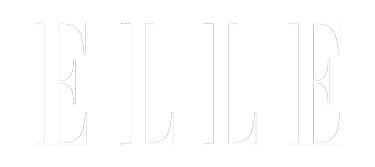God on the Line:
Exploring Clairvoyance as a direct connection to the Big Man Upstairs

In our lifelong quest for spiritual growth and understanding, we often discover concepts that reshape our views and challenge our preconceived notions. Today, we navigate an intriguing terrain - the confluence of clairvoyance and prayer.
This exploration encourages respectful dialogue, open-mindedness, and bridges the gap between different spiritual practices.
This exploration encourages respectful dialogue, open-mindedness, and bridges the gap between different spiritual practices.
Clairvoyance, typically associated with a heightened perception or the ability to perceive beyond the physical realm, is often misunderstood.
To shed light on this concept, let's start by acknowledging that clairvoyance shares a foundational similarity with prayer - both are communication lines with the divine.
To shed light on this concept, let's start by acknowledging that clairvoyance shares a foundational similarity with prayer - both are communication lines with the divine.
Prayer, a cornerstone in various religious traditions, represents a direct conversation with God, a sacred dialogue that brings comfort, guidance, and connection. Similarly, clairvoyance can be seen as a distinct, yet parallel form of divine communication, a conduit that provides insight, wisdom, and spiritual enlightenment.
Just as prayers are imbued with hope and faith, clairvoyant experiences are often filled with profound revelations and answers that help navigate life's winding path.
Just as prayers are imbued with hope and faith, clairvoyant experiences are often filled with profound revelations and answers that help navigate life's winding path.
Consider this: when we engage in clairvoyant meditation, we are essentially reaching out to the divine, seeking guidance or answers, much like a prayer. In these quiet moments of focus and introspection, we knock on the spiritual realm's door, eager for a response. The answers we receive might not be in words or thoughts; they may be feelings, images, or sudden understandings - a silent dialogue with the divine.

It's crucial to address that the intent behind our pursuit plays a significant role. If clairvoyance is sought from a place of love, wisdom, and growth, it aligns with the fundamental principles of many religious persuasions.
In the Bible, we find scriptures that endorse seeking divine wisdom, such as in James 1:5, 'If any of you lacks wisdom, you should ask God, who gives generously to all without finding fault, and it will be given to you.' This resonates deeply with the quest for spiritual insight, the very essence of clairvoyance.
The Buddhist tradition teaches mindfulness and meditation as a path to enlightenment. Clairvoyance, in this context, could be perceived as an insightful step on this path. Even in Hinduism, the concept of the 'Third Eye,' often associated with clairvoyance, signifies spiritual enlightenment and divine connection.
Christian mystics like Saint Teresa of Avila and Julian of Norwich were celebrated for their profound spiritual visions and insights. Their experiences underscore the rich history of 'seeing' beyond the physical senses in Christian tradition, a sentiment that echoes the modern understanding of clairvoyance.
Understanding clairvoyance as a form of prayer doesn't negate our traditional prayer practices. Instead, it broadens our spiritual vocabulary, enriching our divine conversations. This view fosters spiritual inclusivity, opening us up to the many ways we can connect, communicate, and commune with the divine.
In conclusion, the intersection of clairvoyance and prayer invites us to expand our spiritual horizons. Regardless of the words we use or the paths we tread, our shared goal remains constant: a deeper connection with the divine.
As we journey through this life, may we continue to find novel ways to enrich our spiritual dialogue. Let this exploration remind us that spirituality, in its many forms, is a shared pursuit of divine wisdom and connection. And in this shared pursuit, may we find the unity that binds us all.









